Burmese Python Facts
Scientific name: Python bivittatus
Size: 15 – 28ft.
Lifespan: 17 – 20 years.
Wild Population: 10,000+
Primary Colour: brown patterned.
Endangerment: Common
Habitat: United States
Difficulty of Keeping: Difficult.
Optimum environment Temperature: 88°F hotspot with ambient temp of 85°F
What do they eat? All rodents, crocodiles, Anything they can swallow.
Eggs or Live birth: Egg baring snake.
Venomous: None venomous/ None poisonous
Ease of keeping as a pet: This is a snake that must be carefully thought through and is not suitable for households with children.
Cost: Ranges between $100 – $2,000 dependant on morph (colour).
About Burmese Pythons
Burmese pythons in the category of the top 3 largest snakes on the planet. These awesomely sized snakes are the most commonly kept for large snake enthusiasts.
Their nature is docile and experienced keepers can really tame down the majority of baby Burmese pythons. They are not a snake that is recommended for a first-time keeper for obvious reasons. But can make good pets if you have the space to house such a monstrous sized snake.
In the wild Burmese pythons are a pest species within the Florida everglades. Burmese pythons are an invasive species that are not native to the florida. The environment is perfect for them to thrive, but are these pythons are causing serious issues and endangerment to other animals that was originally there.
We do not want to see any reptile come to harm but these snakes do need to be removed from these areas as other native animals have declined significantly.
So, who would be crazy enough to have a Burmese python as a pet? Well, the Burmese pythons looks can be deceiving and make them look like a danger to anyone who comes into contact with them. This is far from the truth, while there are some aggressive snakes, Burmese pythons are among the puppy dog tame spot if you take the tame to get your snake used to handling from the offset.
Just like any snake, a Burmese python can show defensive traits. This is just to protect themselves from predators, snakes will not seek confrontation without reason.
Burmese Python Size
These huge snakes have the potential to grow up to 25 feet in length, they ranked as the 3 largest snake species on record to date. Third to the reticulated python (1st) and the Anaconda (2nd). A full-grown Burmese python is more than capable of eating an adult male deer whole, they have also been known to take down the odd medium sized crocodile when food is sparse.
When just a hatchling, they already measure around 2ft long and a decent weight, this seems to be where most new snake owners look and underestimate how quickly and big the snake will grow. A Burmese python can grow 1- 3ft each year within the first 4 years of its life. After 5 years old the growth rate tends to rapidly slow, but they body gets thicker with each year of maturity.
Weight is a largely varying thing across different Burmese pythons, but as a guideline female will likely become heavier than the equivalent male. This is purely down to the extra reproductive organs. The largest female Burmese python we found weighed in at a humongous 250lb’s.
What is their typical diet
As with all snake, Burmese are carnivores and eat meat, this mostly consists of live mammals. They will start on rats when young and progress to capibaras and deer. In captivity most owners will only need to feed a large rabbit every 2 – 4 weeks and this will be perfectly fine.
If you are considering a pet Burmese python, it is best to check this price of frozen extra-large rabbits as in some areas these can be quite expensive.
Burm’s are part of the constrictor family, they are a non-venomous snake as they do not need it. Once they strike at their prey, the teeth will sink into the skin and act like hooks stopping them getting away. Immediately after this they will throw coils of their body around the prey item and squeeze with incredible force.
It is still unclear as to whether the prey dies of suffocation or due to the shear pressure makes the heart stop beating altogether. The pressure they apply has been measured to having a medium-sized truck place on your chest, unbelievable!
One thing that has never come up before without serious illness, is a Burmese python that would not eat, these snakes love their food and caution should be taken when defrosting their meal and feeding with sufficiently size tongs.
Pet Burmese Python Checklist
- Vivarium
- Heating
- Thermostat
- Vivarium lock/s
- Substrate/ Bedding
- Food (Rats/Rabbits/Deer/Mice Etc.)
Vivarium
As with any huge snake, vivariums are going to need changing more frequently. This can prove costly, but we recommend to any keeper, try and get a cage size that is 1-2ft larger than you really need, this could save you lots of money in replacements.
So, as an example, start with an enclosure that’s 4ft long and 1-2ft deep, housing the snake for up to 2-3 years of age, then move from a 4ft up to a 7-9ft vivarium dependant on how fast they grown. A caging this size with a good depth can house them for the rest of their life and avoid you buying an enclosure every year.
As we recommend to anyone stepping up to the large species of snake, always prepare for the largest possibly, that way you avoid any surprises in the future.
Security of the cage is a huge deal; Burmese pythons have serious amounts of power with their nose. They are more than able to open an enclosure or press hard enough to break a slightly weaken area. When shopping for your vivarium, make sure you get 2 locks and check the enclosure is very sturdy, you snake will exploit any weakness in the cage.
Heating & Thermostat
You should be familiar with what is required such as the thermostat and a heat bulb/ mat depending what is more suitable for you. The ambient temps of the terrarium set to 85 to 88 F with a basking area at 90 to 95 F.
Slight fluctuations will not cause any harm but do not let the temps drop below 75F as this will cause health issues. During the night the basking area and ambient can reduce slightly but is not required.
Humidity
Depending on which part of the world you are from humidity is not often a concern, a Burmese python requires humidity levels of between 50-60% and most countries achieve this without any input.
If you live in an extremely dry location, spray the caging down once a day lightly and this will be more than enough.
Bedding/ Substrate
There are plenty of choices for bedding, almost any type works well for a Burmese, aspen is our favourite as it absorbs some of the belly pressure.
Most keepers opt to use newspaper, but we find this less attractive for pets. Aspen only needs to be completely changed every 2 months, but spot cleaned as soon as defecation is noticed.
Beech chip is another good option, when combined with orchard bark, the enclosure looks fantastic and makes for a great feature in your house.
Choosing The Right Burmese Python
This is often overlooked, and snake bought on impulse, a Burmese python is a snake that should be well thought threw with the willingness to walk away if something seems not quite right.
These snakes have a good chance of living for 2 decades or more, take your time when finding your pet Burmese python, don’t just buy the first one you see, after all there is not lots of large snake enthusiasts.
A good breeder will respect if you need time to go away and think for a while before committing to ownership.
Now when you view the snake, what you need to be looking for. First is check if the snake is alert when the enclosure is opened with their tongue flickering. If you want to avoid a nippy snake, observe how the breeder goes into the caging and if they look hesitant or nervous.
Once they pick up the snake, you are going to need to do a completely head to tail check, always starting with the head.
Around the mouth is there any discharge of gunk?
Is there any shed stuck to the eyeballs or any signs of mites on the eyeball?
Check under the chin of the snake for any damaged scales or again mites/ parasites.
The body of the snake should be firm and solid with little flabby skin, this will be very noticeable. A bit of flab is not a concern.
Finally check the tail for defects or the cloaca for any discharge from the area.
99% of the time, the snake is in perfect condition, but always do this check as it could save you plenty of money in vet bills. If you notice any signs of under standard conditions, please report this to your local authority.
Burmese Python Morphs
A morph is the colour and genetics of the snake, breeders across the world combine different morphs to create new colour patterns and phases. The most common for the Burmese python is the albino, green, labyrinth and the granite python.
These are all the same snake but have a different colour and pattern, they do not change the behaviour or temperament of the snake. The albino is the favoured snake of all the colours, and you can see why.

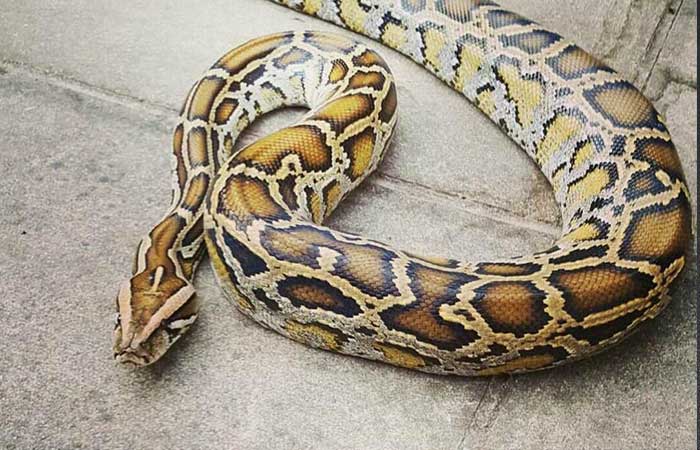
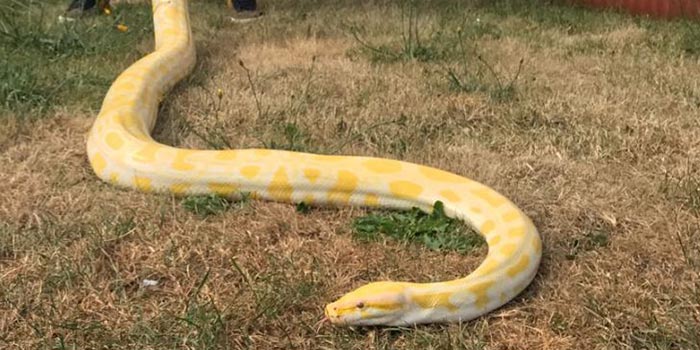
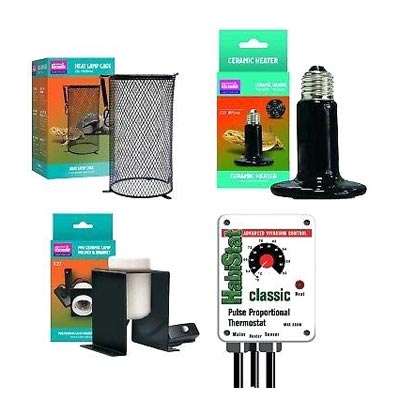
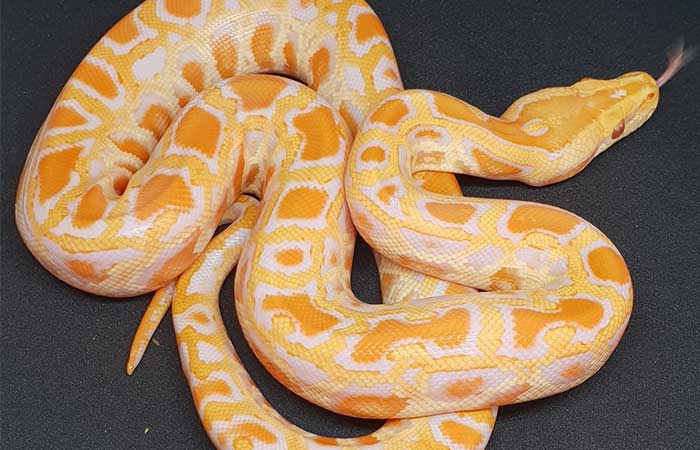
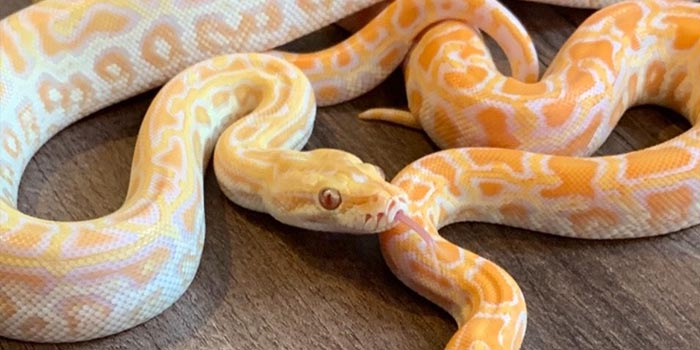
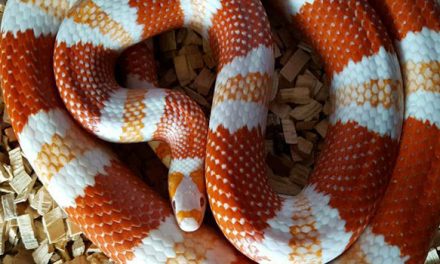
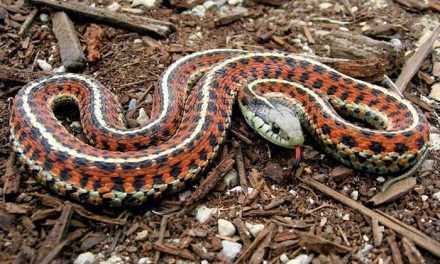
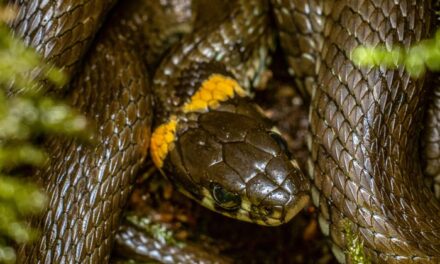
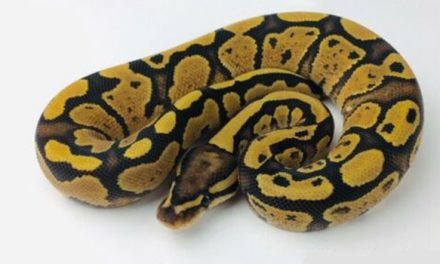
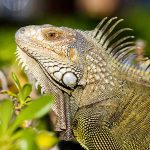
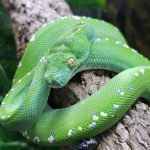
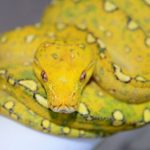

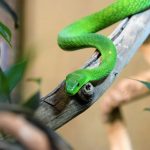
0 Comments